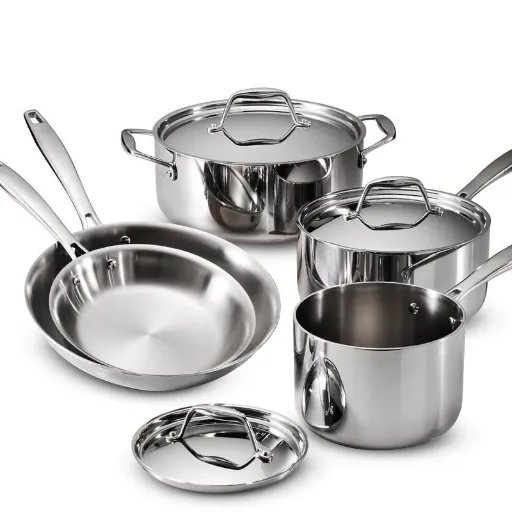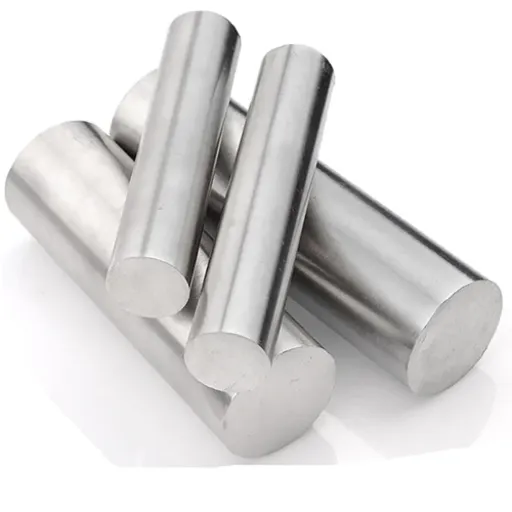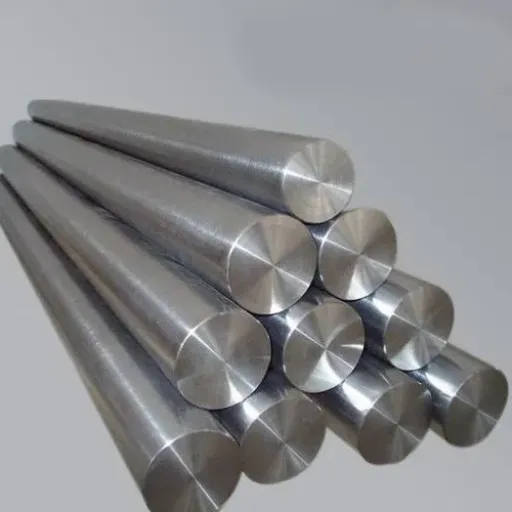These days, stainless steel jewelry is increasingly gaining attention among people because it is modern and affordable. But people interested in it raise a common question – does stainless steel jewelry tarnish? In this article, we discuss the truth about the wear and tear of stainless steel over time and its composition, damage resistance, and maintenance. If you want to know its effectiveness in the distant future or are wondering how to maintain your stainless steel items, this information is for you. After going through this, you will understand why stainless steel jewelry is a dependable option for daily wear.
What is stainless steel, and why is it used in jewelry?
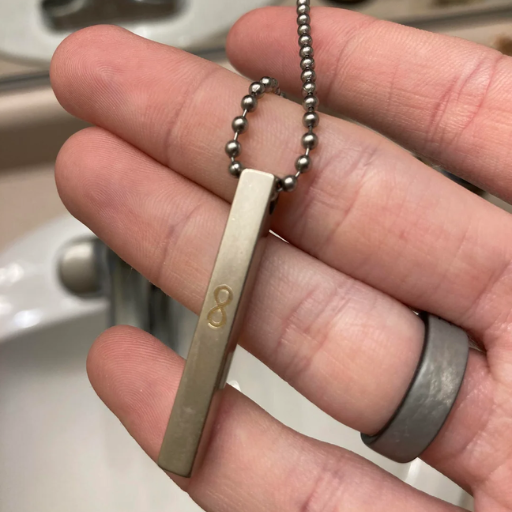
Stainless steel is an alloy formed from iron, carbon, and chromium, the last bestowing its famous resistance to rust and decay. Stainless steel’s affordability, durability, and low maintenance appeal make it an ideal choice in jewelry. Because of its surface finish, children’s stainless steel jewelry is also hypoallergenic and does not irritate the skin when worn by people with sensitive skin. This and its elegant appearance make it a fashionable and timeless choice.
Understanding the composition of stainless steel
I understand that stainless steel’s composition includes iron mixed with a small amount of carbon and at least 10.5% chromium to give it corrosion resistance. Nickel, molybdenum, manganese, or other elements may also be added depending on the type of stainless steel to improve strength, durability, or specific properties. This mixture is quite multifunctional and practical, which is why it is used in jewelry, as it does not tarnish and get scratched while retaining its polished appearance.
Benefits of Stainless Steel for Jewelry Making
- Durability: Jewelry made from stainless steel, with a high tensile strength of more than 515 MPa, can offer quite a sturdy design. It is additionally highly resistant to scratches, daily wear, and dents, which ensures that stainless steel jewelry retains its shape and appearance over time.
- Corrosion Resistance: The chrome present in stainless steel in a proportion of more than 10.5 percent is beneficial as well because it also allows stainless steel to form a passive layer that prevents rust or tarnish from developing, even if it is exposed to water and sweat.
- Hypoallergenic Properties: Many grades of stainless steel, such as 316L, are hypoallergenic, which makes them safe to wear for sensitive skin or those suffering from metal allergies.
- Affordability: Unlike precious metals like platinum and gold, stainless steel offers a polished stainless aesthetic similar to gold and platinum but at a fraction of the cost. This results in beautiful, accessible, yet sophisticated designs.
- Low Maintenance: No matter the type of jewelry, cleaning, and polishing is not a primary concern with stainless steel and simple cleaning methods can be employed for maintenance.
- Versatility: Stainless steel provides strength and malleability, which makes it suitable for different levels of intricacy in design and matte, polished, or brushed finishes.
These qualities demonstrate why stainless steel is trusted for durable, stylish, and low-maintenance jewelry creations.
Comparing stainless steel to other jewelry metals
It stands out most because of its affordability and durability when looking at stainless steel compared to other jewelry metals such as gold, silver, and platinum. Unlike gold and silver, stainless steel does not tarnish and gets scratched, making it easier to maintain. Platinum is also durable, but stainless steel is stronger and more affordable. Because stainless steel is hypoallergenic, it is comfortable to wear daily, which isn’t true for other metals. I believe stainless steel is the best when talking about elegance, durability, and practicality.
Does stainless steel jewelry tarnish over time?

316L stainless steel jewelry is resistant to tarnishing owing to its chromium content, forming a protective surface oxide layer that prevents rust and corrosion. This protective surface makes it highly resistant to oxidation, corrosion, and rust. Its stiffness is valuable when protecting the metallic structure from harsh mechanical impacts while enabling it to withstand extreme weather conditions. Under harsh environments, stainless steel can lose its brilliant shine, which may be restored with proper cleaning. To shieldit from losing its brilliance, regular cleaning with a soft cloth to remove tarnish and limiting exposure to harsh chemicals is recommended.Related articles:Does Stainless Steel Turn Green?
The tarnish-resistant properties of stainless steel
Stainless steel is resistant to tarnishing due to a thin, transparent protective layer of chromium oxide shielding its surface from oxidation and corrosion. These unique characteristics enable stainless-steel jewelry and ornaments to remain free from rust. To maintain it, I regularly clean my stainless steel pieces with a soft cloth and mild detergent and let them dry for them to shine. Keeping them away from harsh chemicals also dramatically lengthens the time for stainless steel items to look pristine.
Factors that may affect stainless steel’s appearance
If left wet for long periods in humid or salty environments, stainless steel may undergo surface discoloration or tarnishing. Furthermore, abrasive surfaces and harsh cleaning solvents may scratch the surface and damage the protective layer of chromium oxide. I’ve also observed that repeated heating or exposure to high temperatures can cause stainless steel items to zone or develop a dull finish on the surface. When cleaning, I try to avoid these factors and gently keep my items in their best condition.
How stainless steel compares to other metals in tarnish resistance
Stainless steel has a high chromium content, allowing it to self-heal by forming a protective layer of chromium oxide. As such, I consider it to be superior to other metals when it comes to tarnish resistance. In contrast, copper and silver are much more prone to tarnishing because they don’t have this self-healing layer and actively react with airborne sulfur compounds, turning into patinas or tarnishing as time passes. Aluminum offers Decent resistance, but it will still dull and oxidize if left uncoated. Compared with other lower corrosion-resistant metals, stainless steel’s higher chromium ratio of 10.5%-30% makes it far more effective at resisting tarnishing. For my purposes, I consider stainless steel’s combination of resilience and durability perfect for meeting practical and aesthetic needs.
Can stainless steel jewelry rust or corrode?
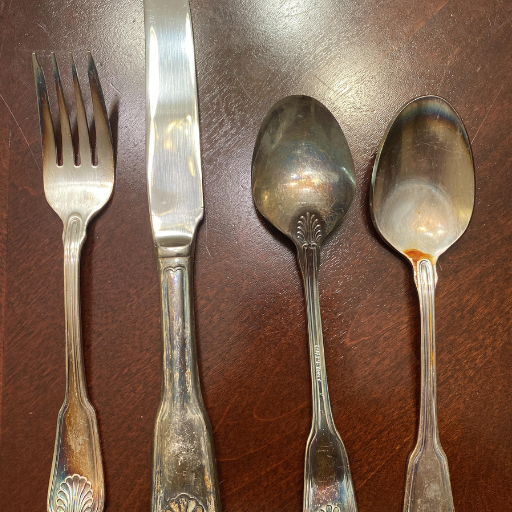
The chromium content in stainless steel jewelry makes it highly resistant to rust and corrosion, providing a protective layer to the surface. Stainless steel will undergo slight surface blemishing and discoloration, but only after severe salt water exposure or chemical damage for an extended period. Regular cleaning will greatly improve its appearance and help prevent further damage.
Understanding the corrosion resistance of stainless steel
That being said, stainless steel jewelry does not rust or corrode because of chromium’s protective shielding, meaning wear and tear is less of an issue. Stain steel will undergo slight discoloration if subjected to strong chemicals and saltwater for long periods. I clean regularly to avoid frequent exposure, and after washing, it looks great.
Situations that may lead to rust on stainless steel jewelry
- Chlorine and Saltwater Exposures
Long exposure to swimming pool chlorine or saltwater will diminish the protective chromium oxide layer of stainless steel, resulting in rust and discoloration over time. This is most probably true for the lower grades containing chromium, like 304 stainless steel, which usually has 18-20% chromium.
- Harsh Chemical Contact
Household cleaners, bleach, and strong acids can chemically react with the surface of stainless steel, damaging its passive layer and exposing it to corrosion. If the material is to be kept in the same pieces of jewelry, then it is better to avoid those chemicals to maintain its integrity.
- High/High Humidity and Moisture Levels for Extended Periods
Stainless steel is rust-proof, but if it is kept in an area with very high humidity, sweat, or moisture for too long, there might be evidence of oxidation after some time. Frequent cleaning and drying can alleviate these issues.
- Surface Damage and Scratches
Too deep scratches or abrasions will break through the protective chrome oxide layer and increase the chances of rust or tarnishing the bare metal. These damages indicate how crucial proper handling and storage of the item are.
Understanding and avoiding those causes can keep stainless jewelry for many years. Regular maintenance and judicious wearing can preserve the jewelry’s beauty and resistance, which is immensely helpful.
Tips for preventing rust and corrosion on your stainless steel pieces
- Keep your pieces dry – After using water, I always dry my stainless steel jewelry because moisture for an extended period may lead to corrosion.
- Avoid harsh chemicals—To prevent my jewelry from being damaged, I remove it when cleaning with strong chemicals or swimming in a chlorinated pool.
- Clean regularly—I clean my pieces gently with a soft cloth to remove dirt, dust, sweat, and oil that collects on them while being worn. I also occasionally use a mild soap solution.
- Store properly—My stainless steel jewelry is stored in a sealed container in a dry location to avoid humidity and air, which can accelerate rusting.
- Inspect often – Periodically, I check my jewelry for scratches or damaged areas where water might get in and fix those problems immediately.
How durable is stainless steel jewelry for everyday wear?
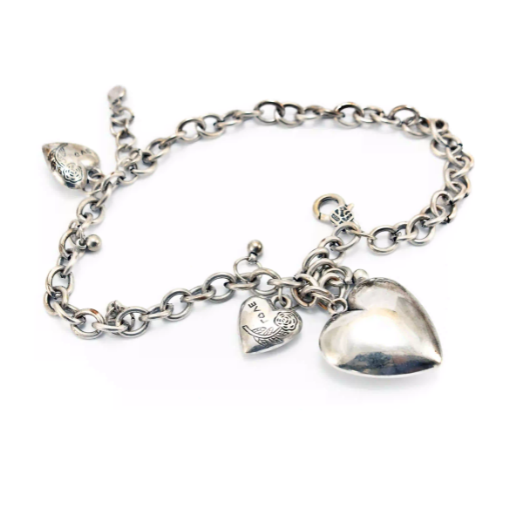
Perfect for daily wear, stainless steel jewelry is an excellent and durable accessory due to the rest of tarnishing, scratching, and corrosion. Whether it’s physical activity or everyday movement, their strength makes it one of the best low-maintenance options. Frequent use will not disrupt the appearance and functionality; all that is needed is proper care.
The strength and durability of stainless steel
Known for its strength and durability, stainless steel is resistant to scratches, making it great for jewelry and other everyday items. Depending on its specific grade, its hardness can be anywhere between 200 to 500 on the Vickers scale, and corrosion is highly resisted with chromium content above 10.5 percent. Even during humid conditions, the passive film formed around the chromium helps prevent rusting. Its passive movie, combined with its lack of corrosion, makes it great for everyday wear. Its tensile strength ranges from 515 MPa to over 1,000 MPa, allowing it to withstand significant amounts of stress without deformation. These qualities enable stainless steel to be low maintenance while retaining great functionality and durability over time.
Wear and tear expectations for different types of jewelry.
Different jewelry types have different longevity features and durability. For stainless steel and tungsten users, corrosion and scratches are not a worry for daily wear. Gold is softer, especially 18K gold and 22K, so scratches are more straightforward, but gold can be worn more often. Silver can work in moderate terms, but with care, it can be slightly more durable than stainless steel. Regardless of the type of metal used for gemstone settings, care is needed, especially for rings because they are loose on the fingers, so over time, frequent use causes the stones to fall out. The essence of the matter is that the more frequently jewelry is used, the more care it requires. To prolong the aesthetic of the most loved pieces, cleaning these pieces and storage must be considered.
Longevity of stainless steel jewelry compared to other materials
Unlike other jewelry materials, stainless steel is exceptionally durable, making it one of the best options for long-lasting jewelry. Its ability to withstand daily scratching, tarnishing, and corrosion makes it one of the most durable options. Unlike softer gold and silver, its composition, primarily made of iron, carbon, and chromium, gives it strength. A minimum of 10.5% chromium added forms a protective oxide layer, preventing rust and keeping the material shiny. Its 5.5-6.3 hardness level on the Mohs scale makes it outperform gold and silver in scratch resistance. In addition, stainless steel’s hypoallergenic properties make it an excellent choice for people with sensitive skin. In comparison, gold and silver’s 2.5-3 Mohs scale are softer and require great care to preserve.
Is stainless steel jewelry hypoallergenic and safe for sensitive skin?
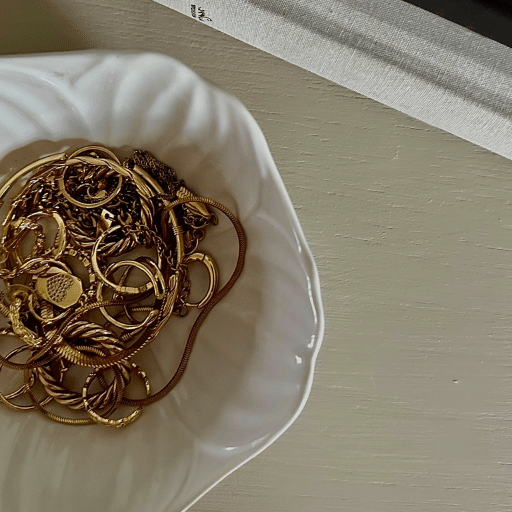
Stainless steel jewelry does not cause allergies and can be worn by those with sensitive skin. These people can wear it safely because alloys such as surgical stainless steel do not contain free nickel ions. Such alloys also contain chromium, which provides strength without causing allergic reactions. With these properties, stainless steel becomes very friendly to people with sensitive skin.
Nickel content in stainless steel and its effects
Yes, nickel in stainless steel jewelry indeed undergoes alloying. Usually, it is an integral part of the jewelry as it strengthens the metal and helps prevent corrosion. Moreover, my studies indicate that reasonable surgical-grade stainless steel alloys do not have this problem since their nickel is firmly bound to the material. For the different types of people, stainless jewelry is an excellent option for people with allergic reactions. Please consult a doctor if you have a severe reaction to nickel before wearing new jewelry.
Choosing the correct grade of stainless steel for sensitive skin
Instead of only considering what begins irritating the skin, it is pertinent to consider what alloy-grade stainless steel has. Surgical steels are always the best options, especially 316L and 316LVM, due to their very low nickel release rates and superiority to other grades. They are more constricted with Nickel alloys, enabling minimal allergic responses.
- 316L Stainless Steel: This is the well-known low-carbon alloy version of 316 that is highly utilized in the medical field and jewelry industry due to its hypoallergenic nature. Usually, the 316L nickel content is between 10-14 %, and the chromium content is around 16-18%, which gives it strength and excellent corrosive capabilities.
- 316LVM Stainless Steel: This is another type of 316L, but with vacuum melting to ensure the best composition with even greater purity and uniformity. Due to its high biocompatibility, it is widely used in implants and body piercings, making it favorable for those with hypersensitive skin.
More affordable options, like 304 stainless steel grades, might not be as hypoallergenic as 316L or 316LVM due to a slightly greater chance of nickel leaching under certain conditions. Always choose surgical-grade products or items specifically designed for sensitive skin for maximum protection. If risks remain, a simple wear test or a visit to the dermatologist should help ease your worries.
Alternatives for those with metal allergies
Those particularly sensitive to metals will find alternatives through which they can quickly solve allergen problems. One great choice would be titanium as it is lightweight, corrosion and heat-resistant, and, most importantly, hypoallergenic. It is used in medical implants and jewelry daily because of its biocompatibility. Another great option would be niobium, which is hypoallergenic and comes in various anodized colors due to the oxidation process. Also, medical-grade non-metallic like PTFE and Teflon are safe for sensitive skin and allow other forms of jewelry to be easily made. Ceramic, glass, PTFE, and Teflon are some non-metal surgical plastic options that are safe for use. Even though these options provide beauty and elegance, they help sufferers easily cope with their allergies. Never forget to check the material’s composition and talk with a specialist if you have high sensitivity.
References
- The Pros and Cons of Stainless Steel Jewelry—This article discusses the durability and resistance of stainless steel jewelry to tarnish and scratches.
- Does Stainless Steel Jewelry Turn Bronze or Lose Its Silver Color? – Explores the tarnish resistance of stainless steel jewelry in various conditions.
- How Long Does Stainless Steel Jewelry Last – Highlights the longevity and corrosion resistance of stainless steel jewelry.
Frequently Asked Questions (FAQ)
Q: Will stainless steel jewelry tarnish over time?
A: Stainless steel jewelry is highly resistant to tarnish due to its chromium content. Unlike other metals, stainless steel does not tarnish or rust easily, making it an ideal choice for jewelry. However, the quality of the stainless steel and environmental factors can affect its appearance over time.
Q: What makes stainless steel resistant to tarnish?
A: Stainless steel’s resistance to tarnish comes from its chromium content. This alloy forms a protective layer on the surface, preventing oxidation and corrosion. High-quality stainless steel jewelry with a higher chromium content will offer better protection against tarnishing.
Q: Can I wear stainless steel jewelry in water?
A: Yes, you can wear stainless steel jewelry in water. Stainless steel is highly resistant to water damage, making it safe for swimming, showering, and other water activities. However, prolonged exposure to chlorine in pools may affect the finish over time, so removing your jewelry before swimming is best.
Q: How should I clean my stainless steel jewelry?
A: Use warm water and mild soap to clean your stainless steel jewelry. Gently scrub with a soft cloth to remove dirt or oils. Avoid using abrasive materials or harsh chemicals. You can use a specialized jewelry cleaner suitable for stainless steel for tougher stains. Regular cleaning will help maintain the shine of your stainless steel necklaces, bracelets, and earrings.
Q: Does stainless steel jewelry require special maintenance?
A: Stainless steel is a low-maintenance jewelry material. It doesn’t require special care like other metals. However, to keep it looking its best, avoid exposing it to harsh chemicals, store it separately from other jewelry to prevent scratching, and clean it regularly with soap and water.
Q: Can stainless steel jewelry be replated?
A: Unlike gold or silver jewelry, stainless steel jewelry typically doesn’t need to be replaced. The stainless steel alloy used in jewelry making is designed to maintain its appearance without additional plating. If your piece looks dull, a thorough cleaning or professional polishing should restore its shine.
Q: Is stainless steel jewelry hypoallergenic?
A: Most stainless steel jewelry, especially those made from surgical steel alloy, is hypoallergenic. This makes it an excellent choice for people with sensitive skin or metal allergies. However, some individuals might still react to the nickel content in certain stainless steel alloys, so it’s essential to know the specific composition of your jewelry.
Q: How does stainless steel jewelry compare to other metals in terms of durability?
A: Stainless steel is incredibly durable compared to many other jewelry metals. It’s resistant to scratches, dents, and corrosion, making it ideal for everyday wear. While it may not have the same prestige as gold or platinum, its durability and low maintenance requirements make it a practical and long-lasting choice for jewelry.


